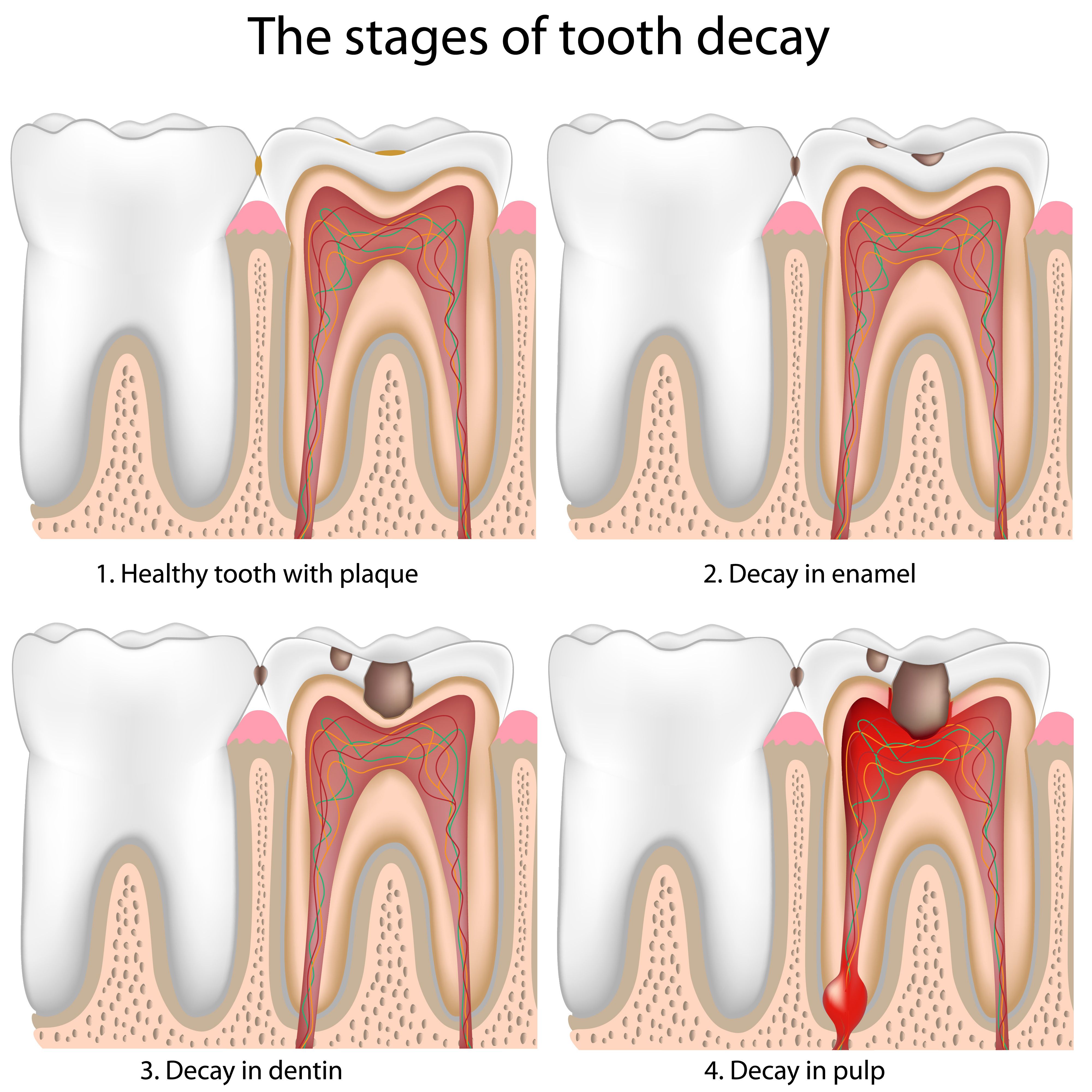What Are the Stages of Tooth Decay?
By John Rink DDS on June 11, 2017
 When patients come to our Charleston dental care center, they can expect the latest in restorative dentistry treatments. This includes advanced procedures to address tooth decay and gum disease. Preventative care is always ideal, however, which is why we always stress good oral hygiene to our patients in addition to proper dental care education.
When patients come to our Charleston dental care center, they can expect the latest in restorative dentistry treatments. This includes advanced procedures to address tooth decay and gum disease. Preventative care is always ideal, however, which is why we always stress good oral hygiene to our patients in addition to proper dental care education.
With that in mind, we want to go over the different stages of tooth decay so you understand why prevention is always ideal.
Stage One: The Initial Lesion
The first stage of tooth decay is an initial lesion forming on the tooth. While this doesn't show up as tooth decay in dental x-rays, it does mean that demineralization is taking place at the molecular level. This usually manifests itself as discoloration of a tooth, usually extra-whiteness or browning.
Thankfully, it's possible to reverse the damage done by the initial lesion, preventing further tooth decay. This will typically involve fluoride treatment, improved oral hygiene from the patient, and the use of dental sealants. Further options for remineralization can be discussed during the consultation process.
Stage Two: Enamel Decay
The next stage of tooth decay involves damage to the tooth enamel. When the initial lesion isn't treated, a cavity forms and become visible in x-rays. While enamel is very durable, steady progression of tooth decay can eat away at this material and expose underlying layers of tooth structure.
To treat enamel decay, the most common option is the use of a dental filling. A filling will replace the missing enamel and restore the strength and durability of the tooth in the process. Metal or tooth-colored fillings can be used as needed.
Stage Three: Dentin Decay
Beneath the tooth enamel is a porous substance known as dentin. The pores in dentin (dentinal tubules) make decay of dentin serious for two reasons:
- The decay spreads faster than it does in the tooth enamel
- Teeth are prone to experience sensitivity, particularly to hot and cold temperatures
When treating tooth decay at this stage, an inlay, onlay, or crown is ideal. These dental restorations are more substantial than fillings. They also come in tooth-colored and metal forms.
Stage Four: Infection of the Dental Pulp
Inside of each tooth is a chamber full of soft tissue known as dental pulp. This dental pulp consists of nerves, blood vessels, and connective tissue that were essential for the initial formation of a tooth. When oral bacteria reaches the dental pulp, this can cause a painful root canal infection.
To treat root canal infections, endodontic therapy is required. This involves removal of the infected pulp, filling the pulp chamber, and capping the tooth with a dental crown.
Stage Five: Formation of an Abscess
When an infection goes untreated and is allowed to spread, this could result in the formation of an abscess in the mouth. An abscess is a pus-filled mass that can be very dangerous to one's overall wellness should it rupture.
Professional treatment is required to carefully drain the abscess and prevent further spread of infection. Dentists can then work to restore the decayed tooth and rebuild any gum tissue affected by the advanced tooth decay.
Learn More About Tooth Decay
If you would like to learn more about treating and preventing tooth decay, be sure to contact our cosmetic and restorative dentistry practice today. Our team looks forward to your visit and discussing these matters with your in much greater detail.

